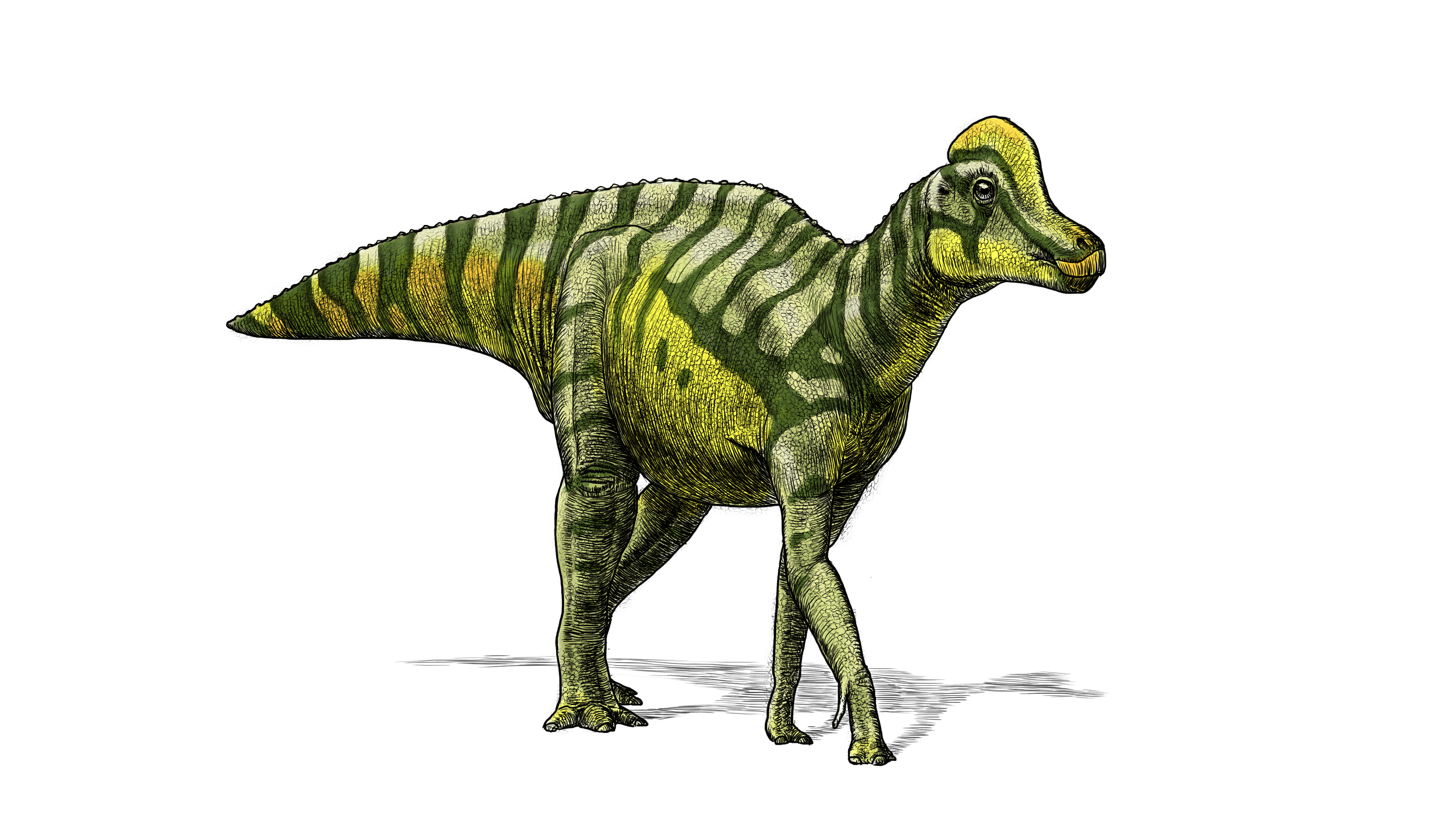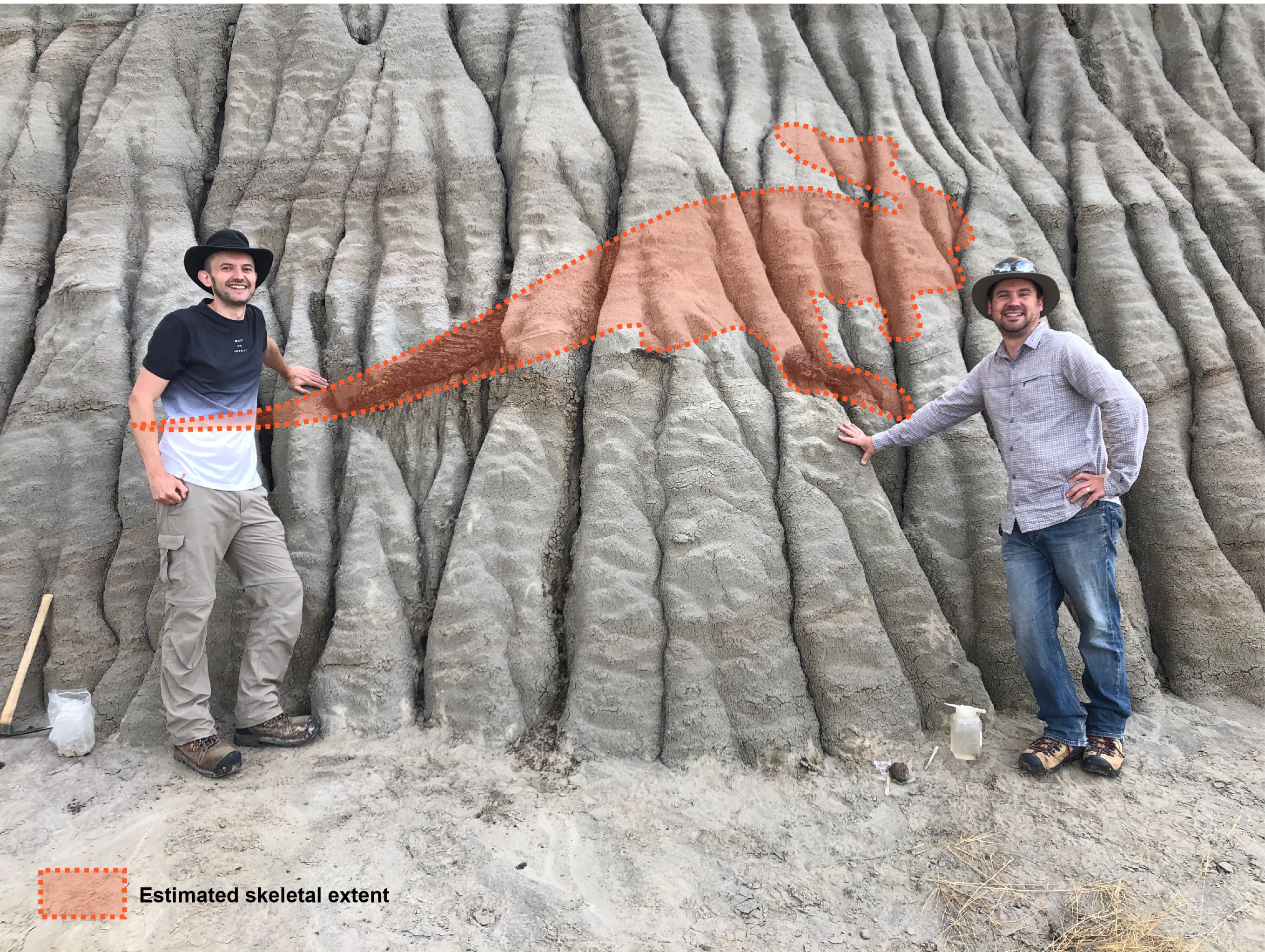Every year thousands of volunteers join paleontological digs in the hope of finding a new species of dinosaur. We don’t yet know if Teri Kaskie managed that last year when she spotted bones sticking out of a hillside in Alberta’s Dinosaur Provincial Park, but it seems likely she’s done something even better. What Kaskie spotted looks to be part of an exceptionally preserved specimen, possibly one of the most intact hadrosaurs ever found. Now the slow task of extracting it has begun.
Dinosaur Provincial Park is so rich in fossils dating to 77-75 million years ago that Dr Brian Pickles of the University of Reading, UK, and Dr Phil Bell of Australia’s University of New England (UNE) were planning back to bring students there to dig in 2019. The pandemic put plans on hold, but in 2021 Kaskie accompanied Pickles to scout for sites where the students could start. The protruding bones spotted might at first have appeared to be just another of the Park’s rich fossil trove, but it has features that make the team suspect they’ve got something special on their hands.

Dr Brian Pickles and Dr Caleb Brown stand next to the exposed parts of the hadrosaur that hint at something very exciting. Image Credit: Melissa Dergousoff, University of Reading, courtesy of the Royal Tyrrell Museum of Palaeontology
The discovery is clearly the tail and right foot of a hadrosaur. That on its own that’s not exceptional. Hadrosaurs were the duckbilled zebras of Cretaceous North America, highly abundant and preyed on by rarer carnivores. Their fossils are common, but this one is probably rather special.
The orientation of what we can see makes it likely more of the hadrosaur is preserved inside the rock – perhaps even an entire skeleton or close enough to include a skull. For palaeontologists used to piecing together what a dinosaur looked like out of bits of many individuals and extrapolating from closely related species, a complete skeleton is a scientific goldmine.

Artist’s impression of a juvenile lambeosaurus, one of the possible species for this fossil. Image Credit: Julius Csotonyi, courtesy of the Royal Tyrrell Museum of Palaeontology
Moreover, some of the skin has been preserved along with the bones. It may be nowhere near the level of another Albertan dinosaur so well preserved it looks like it was cast in metal, however, this is the part that has been exposed to the elements as the hillside eroded. It’s likely, although of course not certain, that there are larger areas of skin in good condition inside, perhaps even from the head.

Pickles and Brown with an estimation of the outline of the hadrosaur within the rock. Image credit: Melissa Dergousoff, University of Reading, courtesy of the Royal Tyrrell Museum of Palaeontology
Finally, the hadrosaur is either an adult small enough it might be a new species or, more likely, not fully grown. Despite the abundance of hadrosaur fossils, we don’t have that many young ones that would reveal how they grew.
Travel restrictions having lifted, the field school is now taking place, with undergraduates from Reading and postgraduates from UNE mapping the rock surface and starting excavations. Along with professionals from the Royal Tyrrell Museum of Palaeontology, the students have covered up the area around the precious hadrosaur while digging has begun from the hilltop to access the fossil layer. Once there, the biggest question will be whether the skull has survived, allowing allocation to one of the over 60 known hadrosaur species or revealing a new one.
“This is a very exciting discovery and we hope to complete the excavation over the next two field seasons,” Pickles said in a statement. Once it is, the bones and rock around them will go to the Royal Tyrrell Museum’s Preparation Lab. There, the delicate task of uncovering bones and (hopefully) skin will take place. It may be many years before the full skeleton is released, let alone a paper published, but the excitement is already palpable.
Source Link: Rare Fossilized Dinosaur Skin And Tail Suggests Epic Fossil Hidden Inside Rock